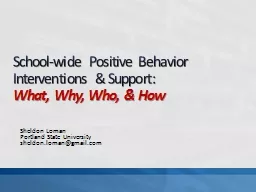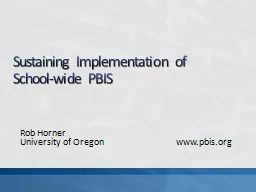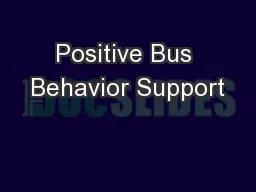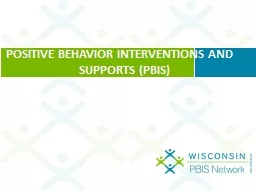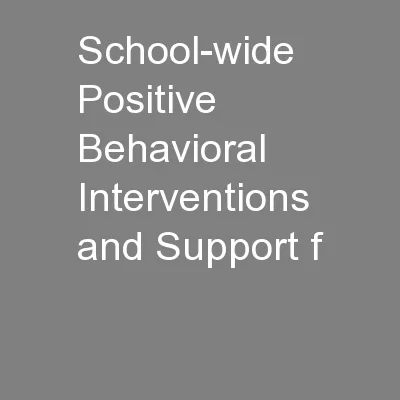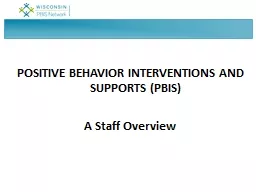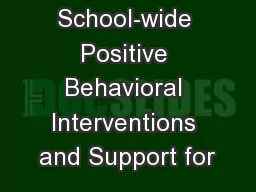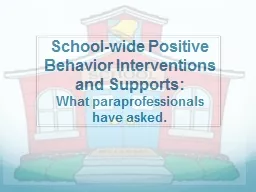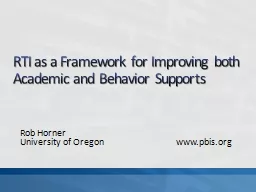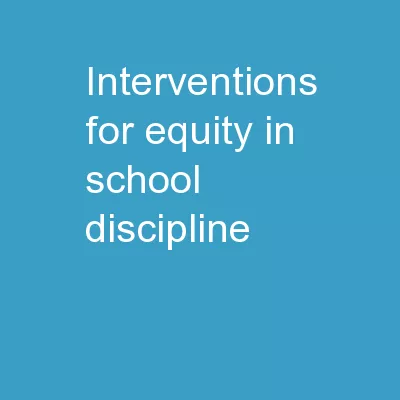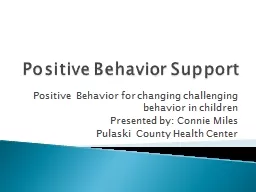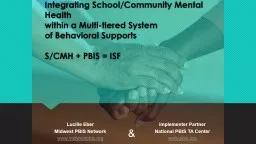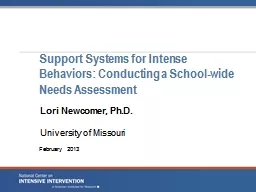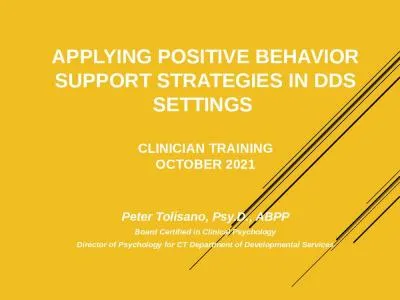PPT-School-wide Positive Behavior Interventions & Support:
Author : calandra-battersby | Published Date : 2016-06-25
What Why Who amp How Sheldon Loman Portland State University sheldonlomangmailcom Goals of Todays Training Develop andor strengthen existing Schoolwide PBIS systems
Presentation Embed Code
Download Presentation
Download Presentation The PPT/PDF document "School-wide Positive Behavior Interventi..." is the property of its rightful owner. Permission is granted to download and print the materials on this website for personal, non-commercial use only, and to display it on your personal computer provided you do not modify the materials and that you retain all copyright notices contained in the materials. By downloading content from our website, you accept the terms of this agreement.
School-wide Positive Behavior Interventions & Support:: Transcript
Download Rules Of Document
"School-wide Positive Behavior Interventions & Support:"The content belongs to its owner. You may download and print it for personal use, without modification, and keep all copyright notices. By downloading, you agree to these terms.
Related Documents

